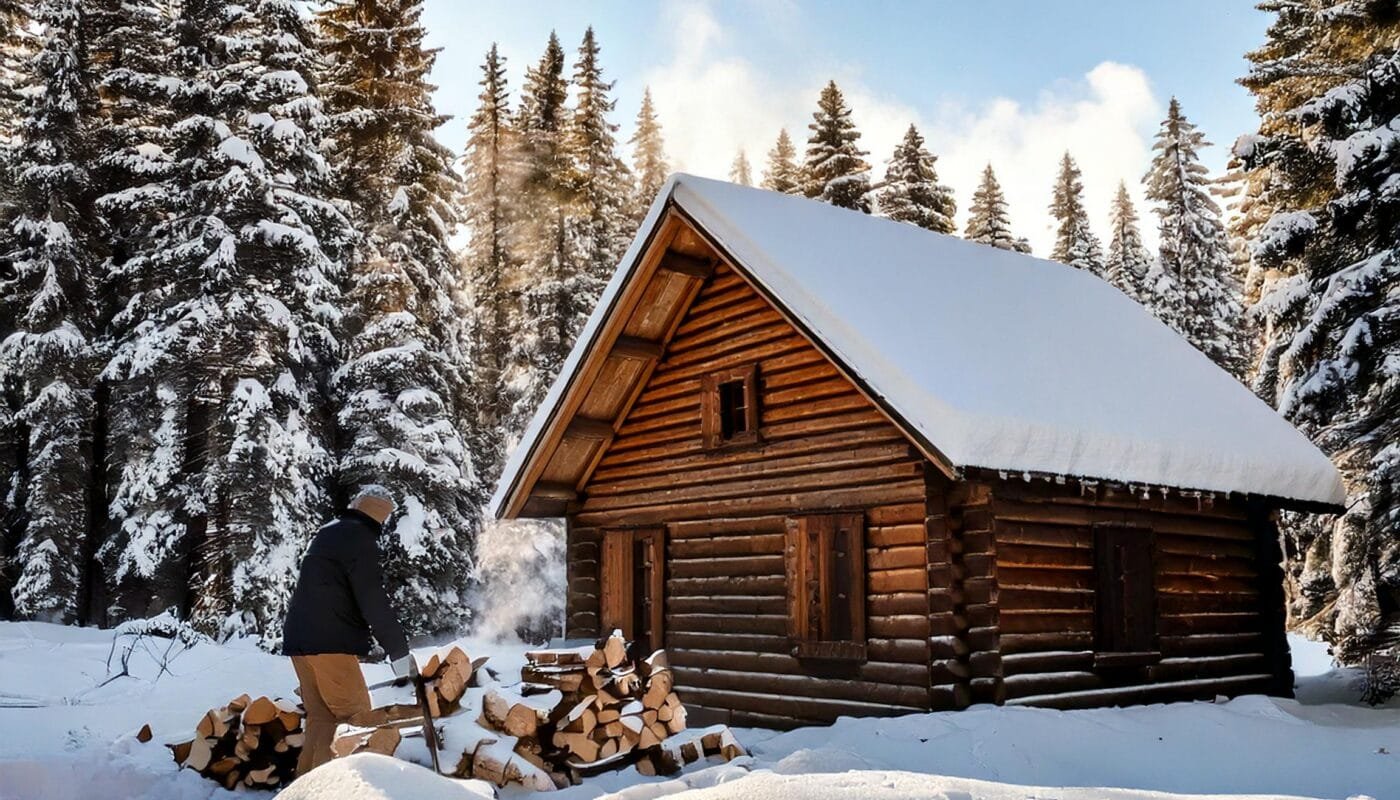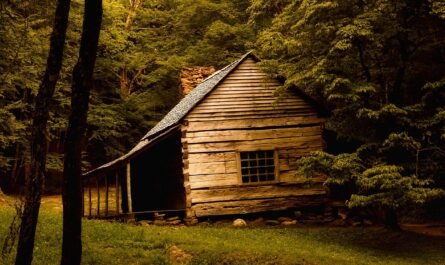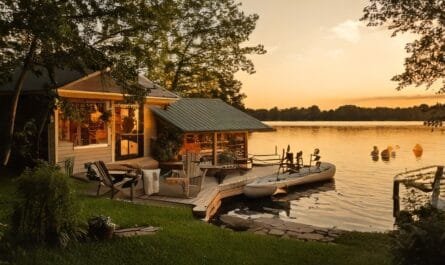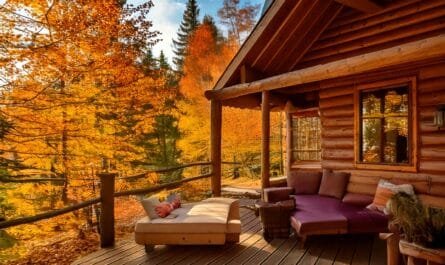There’s nothing quite like having a cozy cabin to escape to, whether it’s a second home, a summer cabin, or a vacation rental. But as the cold winter months roll in, cabin owners need to take the proper care to protect their property. Without the right preparation to winterize a cabin, things like frozen water pipes, costly damage, or even burst pipes could turn your peaceful getaway into a repair nightmare. Taking the time to winterize a cabin might seem like a lot of work, but by taking the right steps to winterize a cabin, you can avoid serious damage and enjoy peace of mind until next spring. Here’s how to winterize a cabin effectively.
Winterize a Cabin – Table of Contents
1. Water Woes? Drain and Defend Your Plumbing
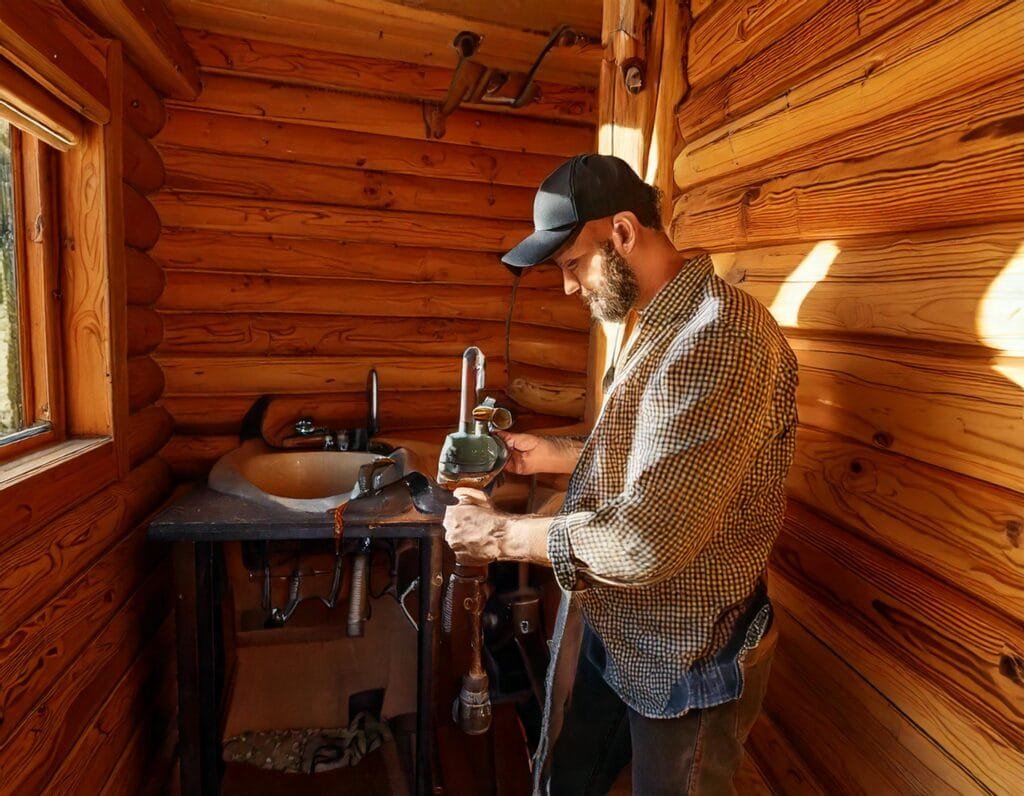
Winterizing a cabin begins with ensuring that the water system is thoroughly prepared for low temperatures. Properly winterizing a cabin ensures you can avoid potential damages and costly repairs related to the water system.
Properly winterizing a cabin ensures you can avoid potential damages and costly repairs. The first thing you need to do when winterizing a cabin is focus on the water system. This is one of the most vulnerable parts of your cabin during the cold weather, so taking the time to drain and protect it is a best practice.
When winterizing a cabin, start by turning off the main water supply and opening the main water valve to drain the plumbing system. This step is critical in the winterization process for a cabin.
Say Goodbye to Freezing Water Lines
Wrapping exposed water pipes in heat tape is a smart move when you winterize a cabin. This helps prevent freezing in areas where pipes are most vulnerable.
Start by turning off the main water supply and opening the main water valve to drain the plumbing system. This will clear out as much water as possible from your water pipes, pressure tank, and sump pump. Don’t forget to open all the drain valves, including the low point drain, to let gravity do its work. Flush toilets and open faucets to remove any remaining water.
For extreme cold weather situations, leaving a dripping faucet can significantly help when you winterize a cabin.
If your cabin has a hot water tank or gas water heater, make sure to drain these, too. Skipping this step could lead to water freezing inside the tank, causing cracks or leaks. To protect areas like toilet bowls and floor drains, pour a cup of non-toxic antifreeze into each one. This will help keep them from freezing during the cold months.
Insulate and Antifreeze: The Ultimate Duo
Once your pipes are empty, it’s time to protect them from the bitter cold. Wrapping exposed water pipes in heat tape is a smart move. This helps prevent freezing in areas like the crawl space or exterior walls. For extra protection, consider pouring a bit of antifreeze into your plumbing system to guard against any lingering water freezing up.
Long-Term Plumbing Peace of Mind
Make sure to winterize a cabin by setting your heating system to the lowest setting that still protects your cabin’s pipes and interior.
Inspect the cabin for air leaks, as part of the process to winterize a cabin, to ensure the heating system operates efficiently.
For extreme cold weather, leaving a dripping faucet in key areas can help reduce pressure buildup and prevent burst pipes. If you’re unsure about any part of the process, it’s always a good idea to contact a local plumber. They can provide additional information, ensure everything complies with local laws, and double-check that your plumbing system is ready for the winter season.
2. Heating and Electricity: Keep the Warmth Alive
Even if your cabin will sit vacant through the winter, maintaining your heating and electrical systems is essential for avoiding damage and keeping everything in good shape. When preparing to winterize a cabin, unplug unnecessary electrical appliances to reduce risk.
Keep the Chill at Bay with Smart Heating
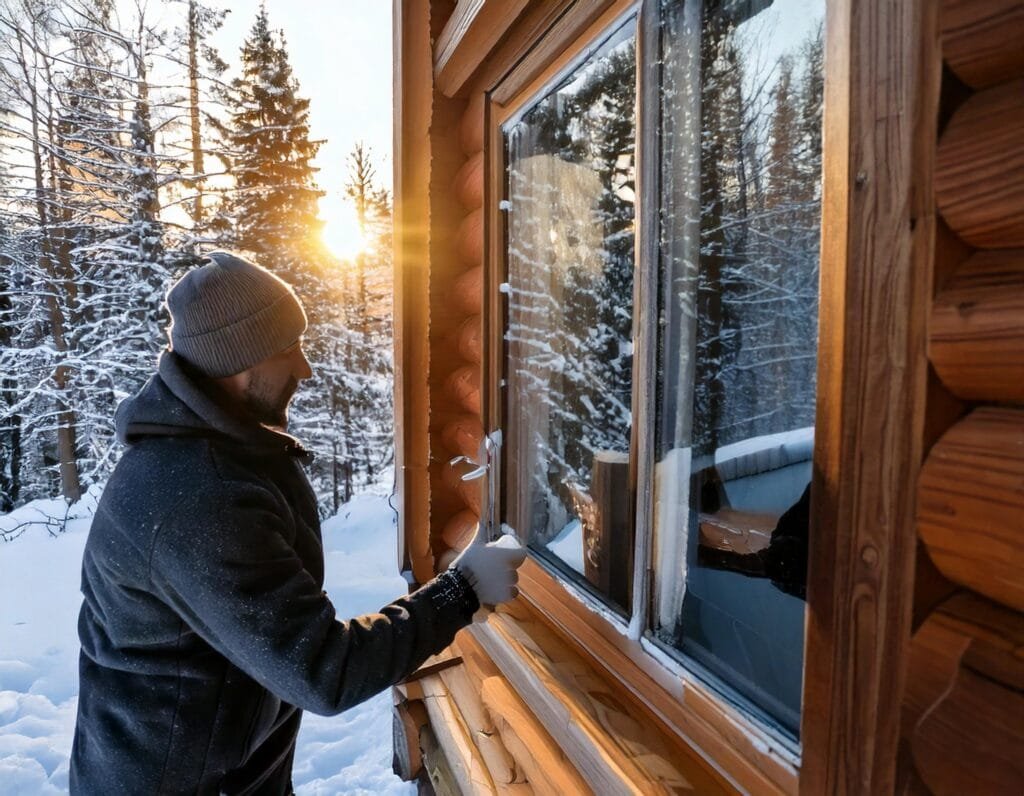
When you winterize a cabin, ensure your sprinkler system is shut off and completely drained.
Set your heating system to the lowest setting that still protects your cabin’s pipes and interior. If you want to make this even easier, a programmable thermostat or smart thermostat can help you monitor and adjust temperatures remotely.
Inspect the cabin for air leaks around windows, doors, and interior walls. Cold air sneaking in through cracks or gaps can make your heating system work harder and create unnecessary wear. In places like the crawl space or attic, consider adding insulation to keep warm air in and cold air out.
Electrical Essentials for a Trouble-Free Winter
Before you leave the cabin for the season, unplug all unnecessary electrical appliances. This step reduces the risk of faulty wires or damage from power outages during storms. Replace the air filter in your heating system to keep it running efficiently when you return for next spring.
If you’re using electric units, make sure they’re in good condition. Check components like the dip tube and any outlet valves to catch issues before they become problems. This simple preparation helps avoid costly repairs later.
3. Outdoor Defense: Protect What’s Outside
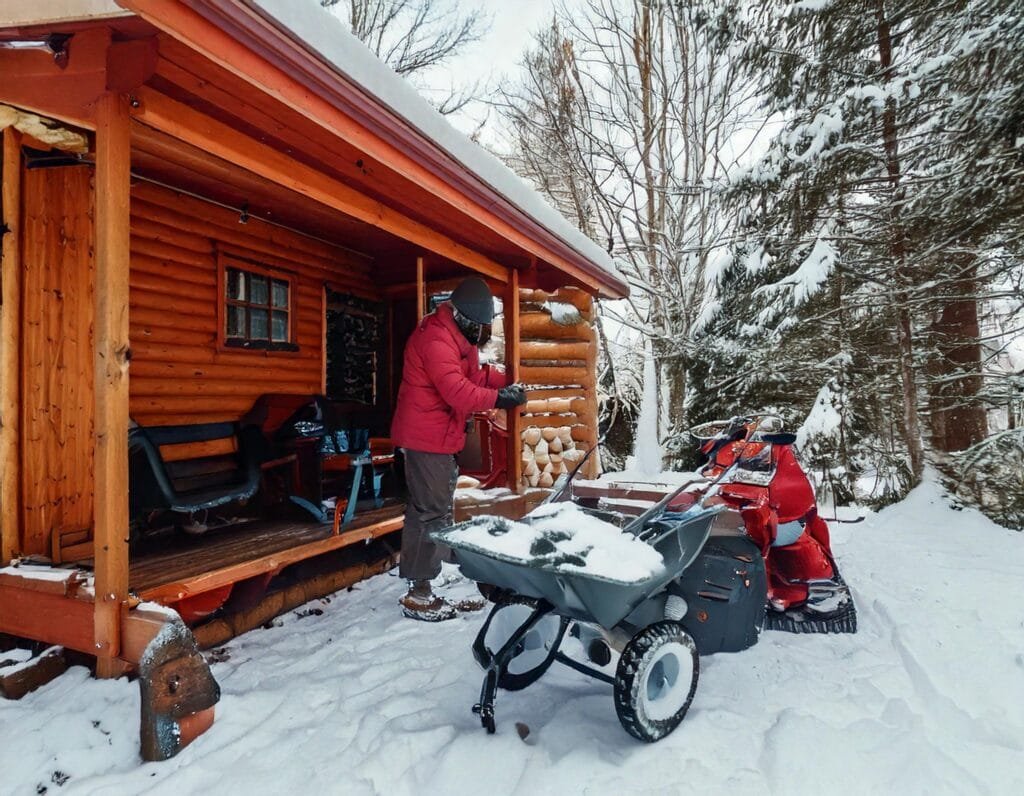
Winterizing your cabin isn’t just about what’s inside—it’s also about safeguarding the exterior. Proper care for outdoor items can save you from unnecessary repairs or replacements when the cold months are over.
Before leaving, make sure to winterize appliances thoroughly, ensuring all aspects of your cabin are ready for colder months.
Outdoor Items: Tuck Them Away Safely
Before the temperatures drop, gather all your outdoor furniture, lawn mowers, and other outdoor items and store them in a dry, covered space. Leaving them out in the elements can lead to moisture damage or rust, making them unusable when next spring rolls around.
Your sprinkler system also needs attention. Shut it off and drain it completely to prevent ice from forming inside the pipes. Ignoring this could lead to costly damage once the weather warms up again.
Finally, clear gutters and downspouts to avoid ice buildup that could cause serious damage to your roof or siding. This simple extra step can prevent significant repair headaches later.
Prep the Septic Tank and Property
Your septic tank plays a vital role in maintaining a safe and functional cabin. Before winter sets in, inspect it for any issues and ensure it’s ready to handle the colder weather. You’ll thank yourself when you don’t have to deal with frozen waste systems in the dead of winter.
Winterizing a cabin requires checking the plumbing and heating systems regularly to avoid future issues. Taking the time to inspect the property for anything else that might be affected by snow, ice, or freezing temperatures—like exterior light fixtures or pathways—can help you keep your cabin safe and secure during the winter season.
4. Creature Comforts: Tidy the Inside for Winter
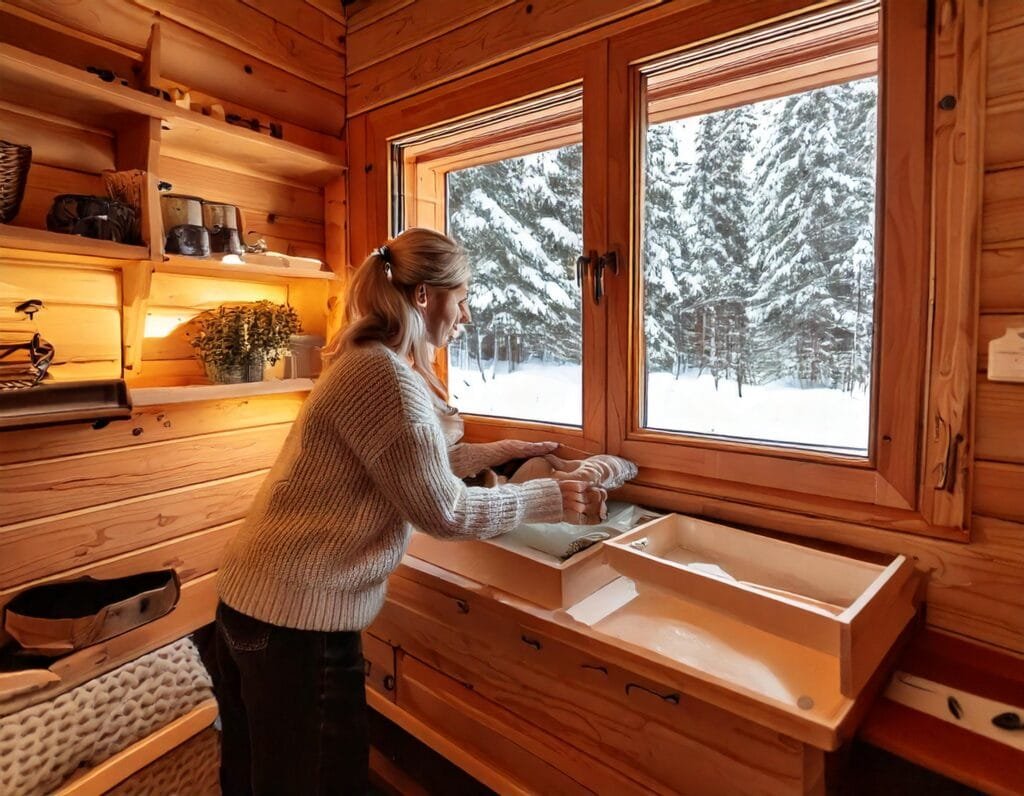
Finally, the last steps to winterize a cabin include making sure everything is properly secured at your property.
A cabin isn’t just a structure; it’s a home. Protecting what’s inside is just as important as winter-proofing the outside.
Pest-Proof Like a Pro
One of the last things you want is to return to your cabin in spring and find it overrun by critters. Remove all dry food and perishable items from the pantry and kitchen. Rodents and other pests are drawn to even the smallest crumbs, so clean thoroughly before leaving.
To further deter unwanted visitors, place dryer sheets in corners, cabinets, and drawers. Rodents hate the smell, so it’s an easy and inexpensive way to keep them out of your vacant house.
Set the Stage for Next Spring
Before you lock up, make sure to winterize appliances like the hot water heater, water pump, and any other major systems. Open curtains or blinds to let in natural light and reduce moisture buildup, which can lead to mildew or a damp atmosphere.
Taking these simple steps ensures your cabin will be as welcoming in the spring as it is during the warmer months.
5. Stay Ahead: The Power of Regular Maintenance
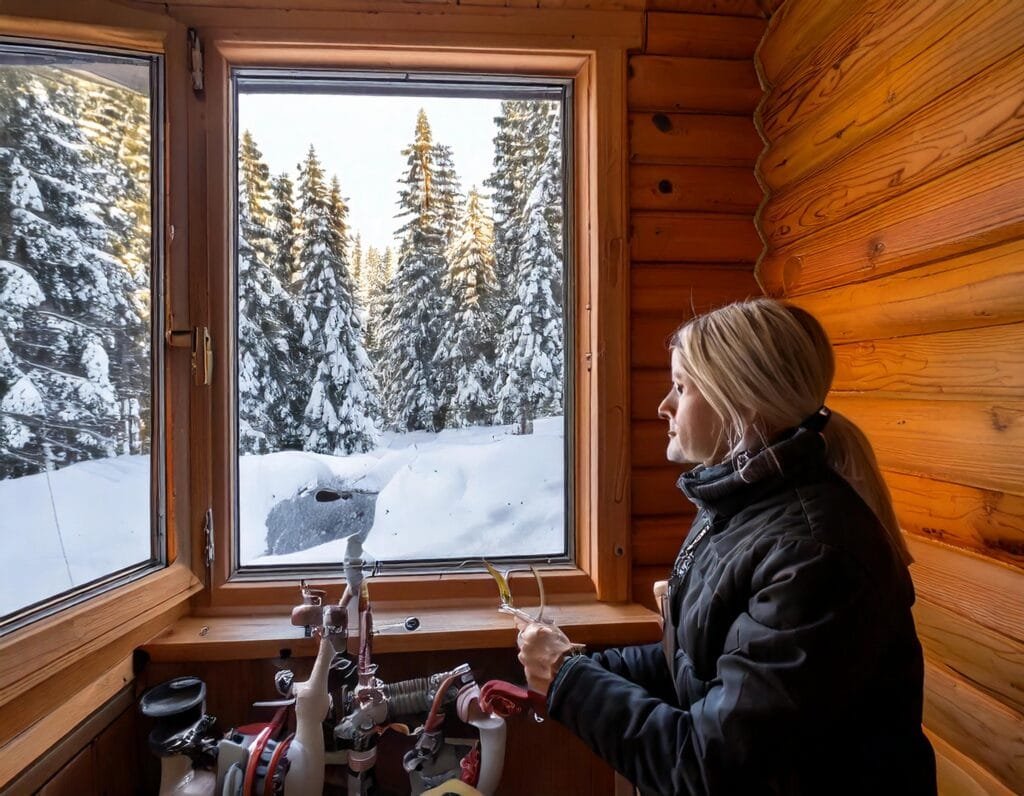
The best way to keep your cabin in excellent condition is through consistent, regular maintenance. Winterizing isn’t just a once-a-year task; it’s part of a larger plan to protect your investment.
Routine Inspections Save Time and Money
Taking the time to inspect your cabin each season helps you stay ahead of potential issues. Check the cabin’s pipes, plumbing system, and heating system regularly to ensure everything is in working order. This reduces the risk of costly damage and guarantees that your cabin will be ready for spring use when the warmer months return.
If you’re not sure where to start, reach out to local home service professionals. Dozens of home service providers, such as those connected to Neighborly’s national network (a registered trademark of Neighborly AssetCo LLC), can assist you. They can provide additional information, make sure your cabin complies with applicable laws, and take care of tasks like winterizing electrical appliances or inspecting the septic tank.
Professional Help: A Good Idea
Even with a solid understanding of what needs to be done, sometimes it’s a good idea to leave certain jobs to the experts. By collecting the email addresses and phone numbers of trusted local plumbers and electricians, you’ll always have reliable help on hand when you need it.
6. Final Steps: Your Winterized Cabin Awaits
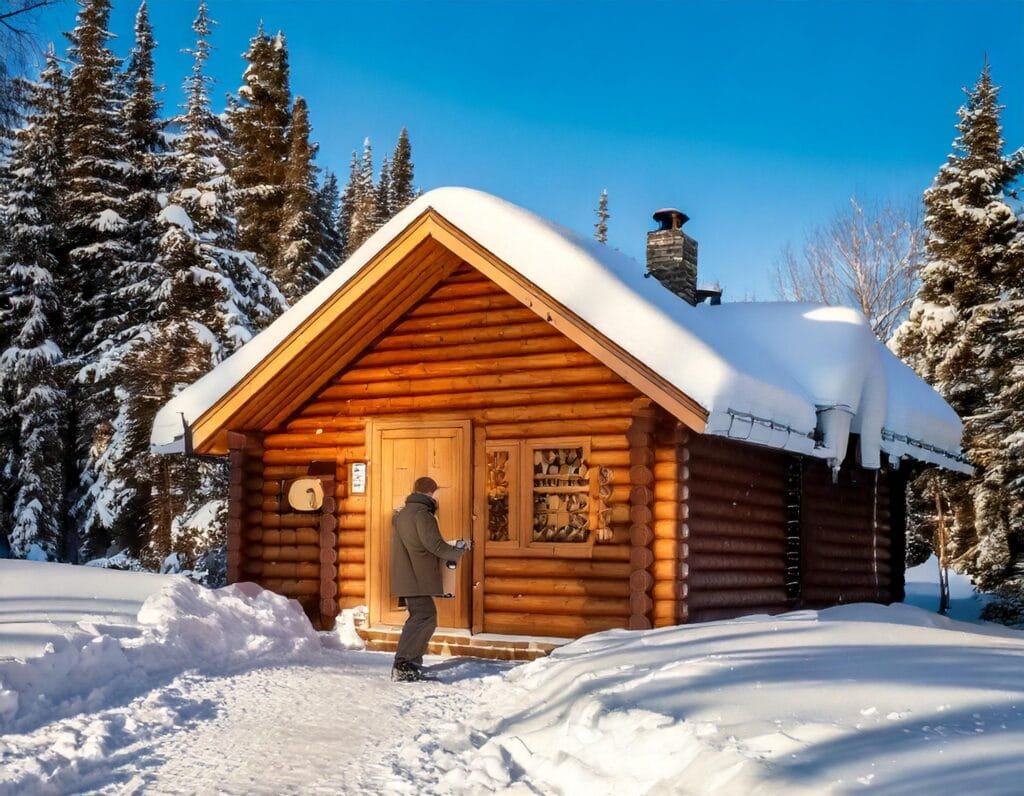
Before you leave your cabin for the season, take these last steps to ensure everything is in place. Think of it as a final walkthrough to give yourself complete peace of mind.
The First Thing and the Last Thing
The first thing you’ll want to double-check is the water system. Make sure all faucets are drained, the plumbing system is cleared, and antifreeze has been added to any necessary drains. Similarly, confirm that the heating system is set to its lowest setting or adjusted on your smart thermostat.
The last thing you should do is walk through the cabin, ensuring windows are locked, outdoor items are stored, and all unnecessary electrical units are unplugged. This extra step guarantees that your cabin is secure and ready to withstand the cold winter months.
A Cabin Ready for Any Season
By following these steps, you’ll protect your cabin from serious damage and ensure it’s ready to welcome you back next spring. Winterizing might take a little effort, but it’s the best practice for maintaining your second home or vacation rental in tip-top shape.
Embrace the Cold with Confidence
Winterizing your cabin is all about preparation. By draining the water system, insulating pipes, securing the heating system, and caring for outdoor and indoor spaces, you can avoid costly damage and enjoy peace of mind during the winter season. Whether you’re a seasoned cabin owner or managing a summer cabin for the first time, these steps will ensure your property stays in great condition all year long.
With a little effort now, your cabin will be ready to embrace the cold weather and welcome you back for next spring’s adventures.
